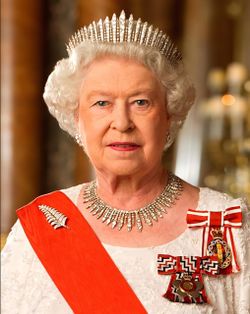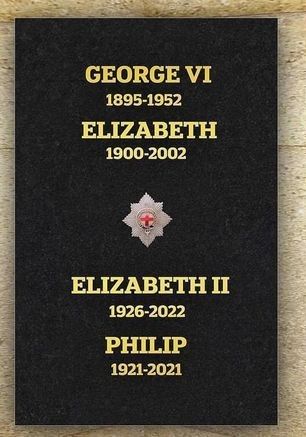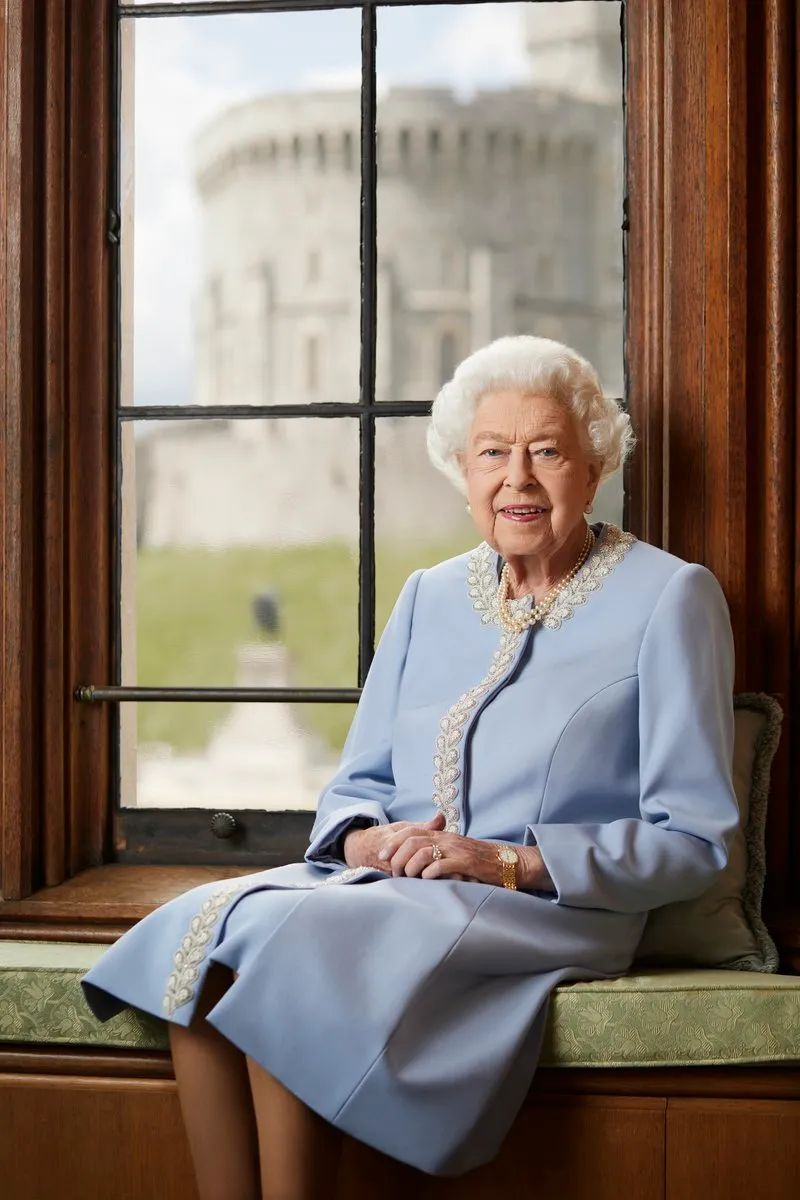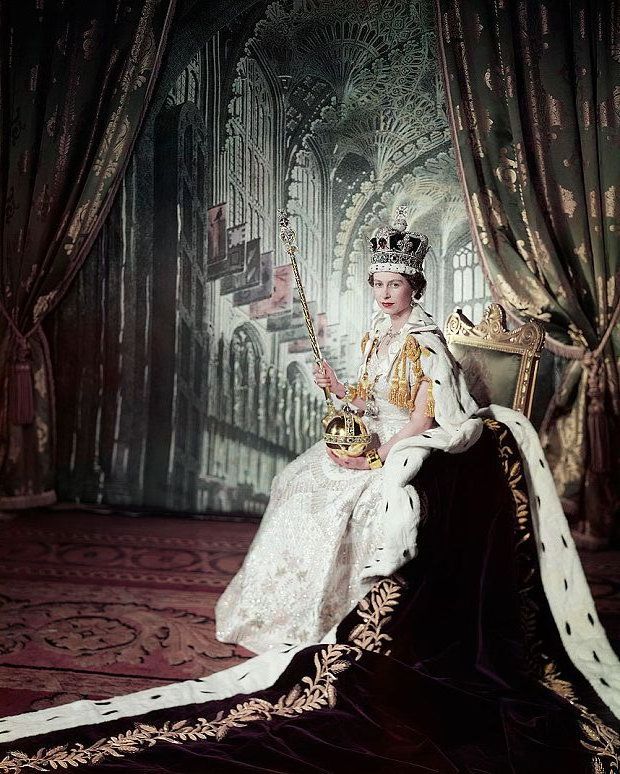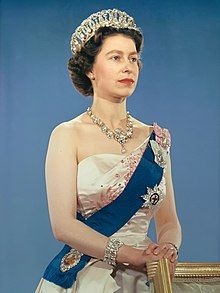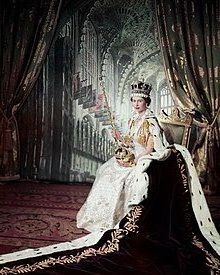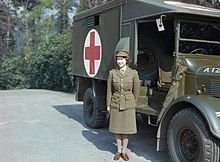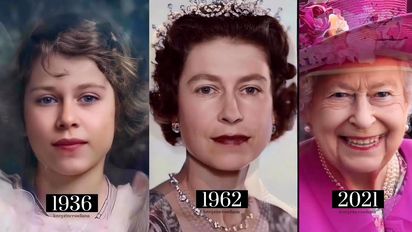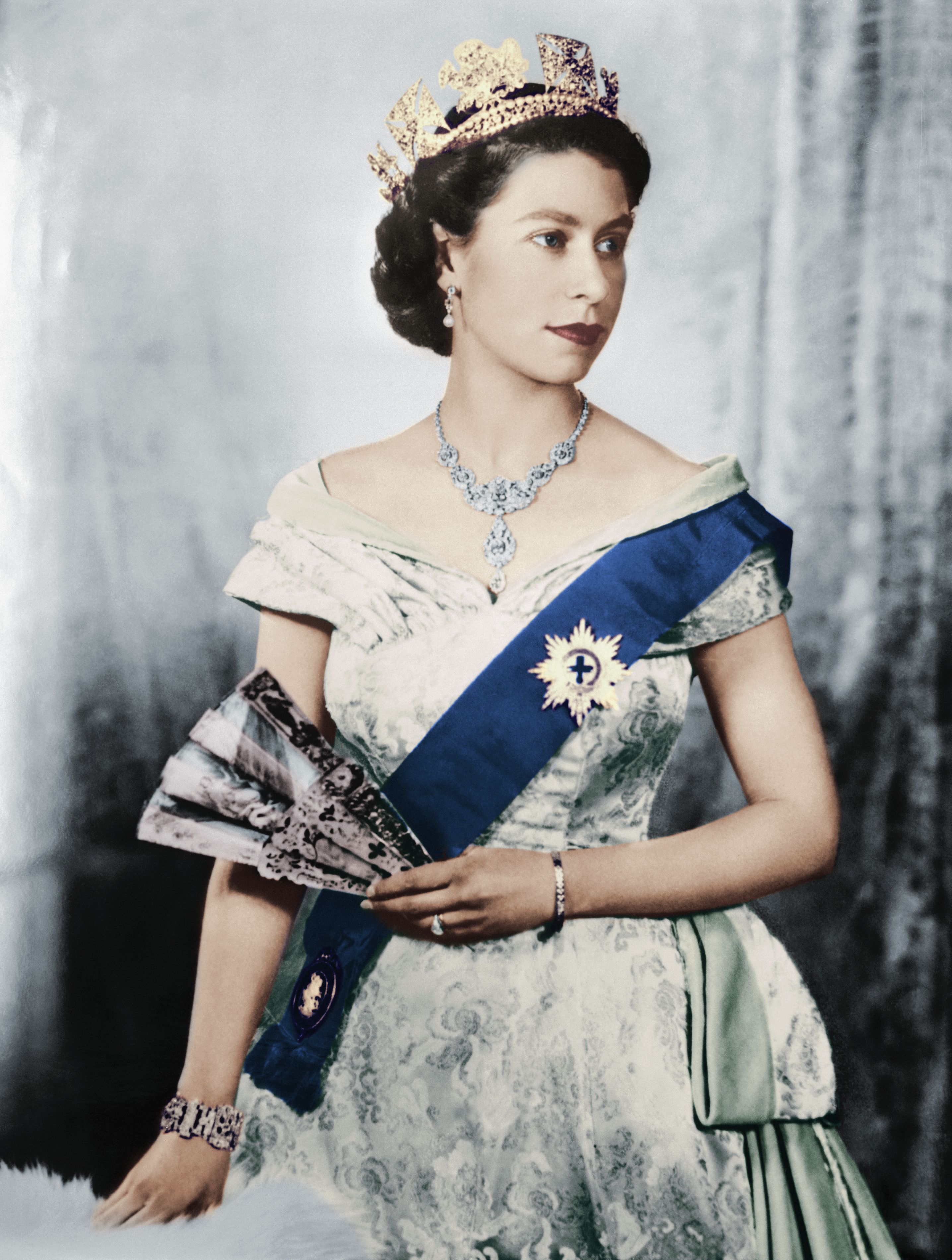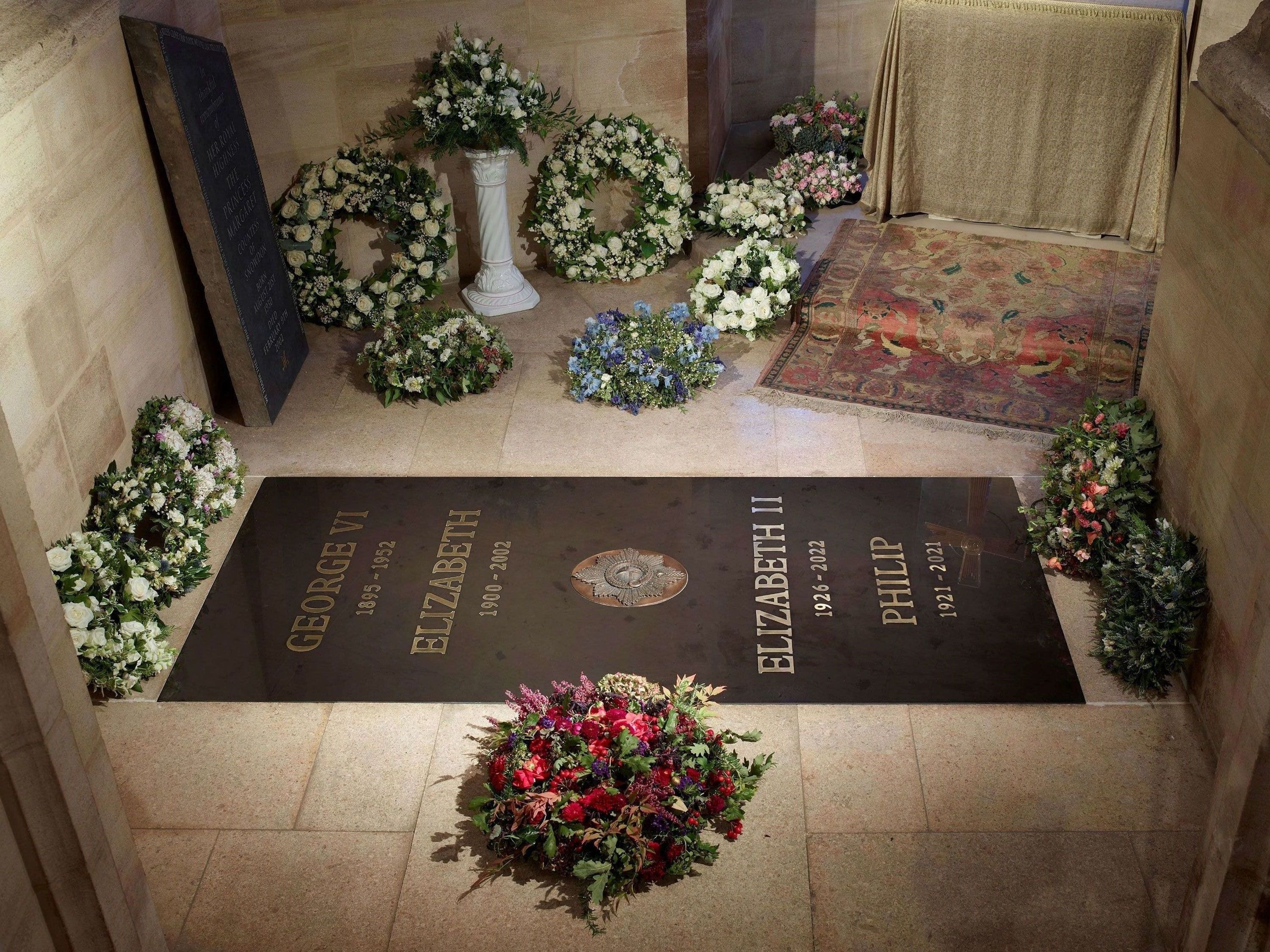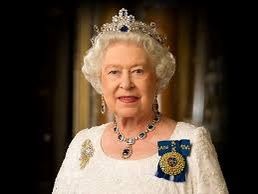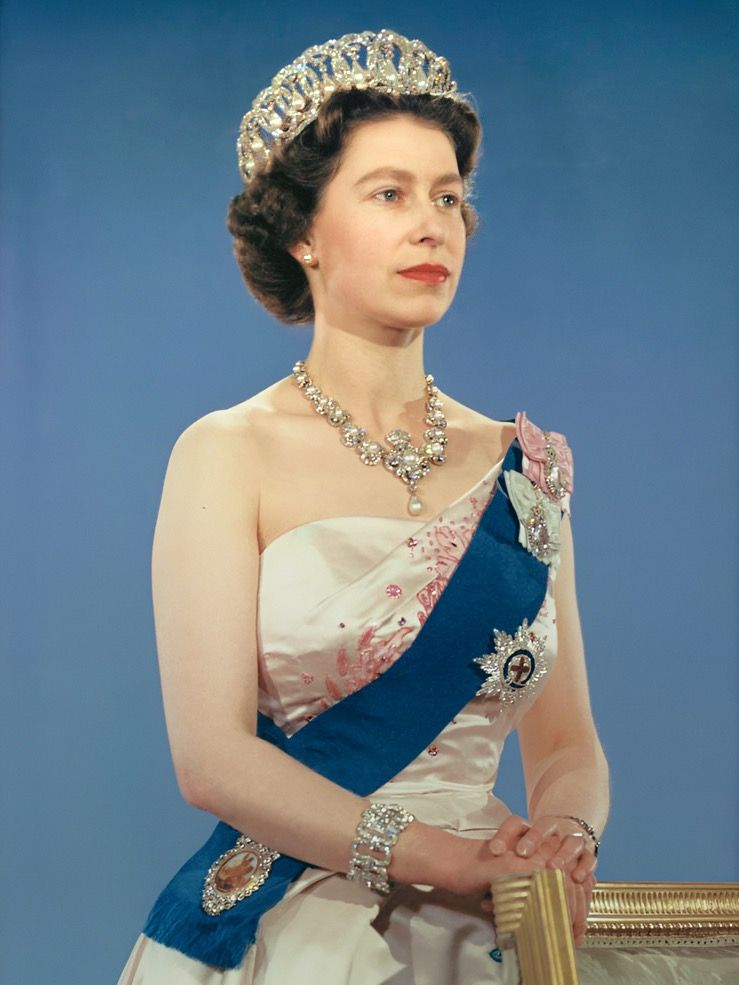British Monarch. Born the eldest daughter of Prince George Albert Frederick Arthur and Mary Bowes-Lyon, the grandchild of King George V and Queen Mary of Teck. As her father was a second son, she was never expected to succeed to the throne and subsequently enjoyed a relatively normal childhood. Upon the death of George V in 1936, however, his eldest son, Edward succeeded him. Edward's reign proved to be the briefest in the history of the United Kingdom when he proposed to an American socialite and divorcee, which was unacceptable from the head of the Church of England, and he was forced to abdicate. Her father then assumed the throne, taking the regnal name of King George VI. The young Princess became the heir apparent. Her royal education quickly commenced, with private tutors instructing her on the intricacies of a constitutional monarchy and other pertinent courses. At the onset of the WW II, the royal family withdrew to Windsor Castle. While there, the young Princess conducted her first radio address. She helped tend a victory garden at the royal palace, and enrolled in the Auxiliary Territorial Service, the female branch of the British Armed Forces. Attaining the rank of Junior Commander, she qualified in a number of courses including mechanics, driving, and vehicular maintenance. On 8 May 1945, now known as VE Day, she appeared with her parents, younger sister, and Prime Minister Churchill on the balcony of Buckingham Palace to cheering crowds. In 1947, she became engaged to Prince Philip of Greece and Denmark, a grandchild of King George I of Greece. After a four month engagement, during which Philip was required to renounce his foreign royal titles, the two were married by the Archbishop of Canterbury in Westminster Abbey. The following year, their eldest child, Charles, was born. Two years later came their only daughter, Princess Anne. King George VI's health then began a precipitous decline. In February 1952, Elizabeth and Philip departed England for a royal tour of the British Commonwealth. While in Kenya, the princess was informed that the King had passed in his sleep, and Elizabeth was now Queen of the Commonwealth. On 2 June 1953, she had a coronation at Westminster Abbey. The occasion was the first coronation of a British monarch to be televised. The first years of her reign proved pivotal; as a number of crises arose. The post-war British economy was slow to recover, and several former British possessions sought independence. The Queen and her consort embarked upon numerous global tours of the member nations and their allies. She became the first British monarch to visit Australia and New Zealand, and the first to open the Royal Canadian Parliament. In 1957, she became only the second monarch to visit the United States. She became the first British Queen to address the United Nations General Assembly. Over the next decade the Commonwealth began a dramatic transformation. Numerous British holdings in the Caribbean, Africa, and the Far East transitioned to self rule. Other counties declared independence, breaking away from British governance all together. The Queen and her consort had two more sons during this time, Prince Andrew in 1960, and Prince Edward in 1964. In 1969, she presided over the investiture of Prince Charles as the Prince of Wales. In 1977, the Queen celebrated her Silver Jubilee marking twenty-five years on the throne. In 1982, she was forced to deploy her armed forces to the South Atlantic to push back Argentinian troops which had occupied the British Oversea Territories of the Falkland Islands. Unpopular policies under the Thatcher administration effected the popularity of the monarchy, which began a slow decline. By time of her Ruby Jubilee in 1992, the Queen was undergoing a self labeled, "Annus Horribilis" or horrible year. A catastrophic fire destroyed a large section of Windsor Castle, three of her children's marriages came to an end, and public sentiment against the royal family hit an all time low. In 1997, following the death of her former daughter-in-law Diana, the Queen was pressured to make a special address to the nation in order to alleviate the public's sense of a remorseless monarchy. The televised speech was well received and helped to begin the restoration of her high public esteem. In 2002, she became only the sixth English monarch to have reigned fifty years. The occasion was punctuated, however, with twin losses of her mother, Queen Elizabeth, the Queen Mother, and her only sibling, Princess Margaret, who passed away within a month of each other. In 2007, she and Prince Philip became the first British royal couple to celebrate a diamond wedding anniversary. She also became the longest lived British monarch. 2012 saw the nationwide celebration of her Diamond Jubilee marking sixty years on the throne; previously only Queen Victoria had served as long. That same year, she opened her second Olympic Games. Three years later, she officially became the longest reigning British monarch. In February of 2017, she became the first British monarch to celebrate a Sapphire Jubilee, and later that year became the only monarch to commemorate a platinum wedding anniversary. In 2020, she released only the fifth special address in her exceptionally long reign. Her broadcasts sought to strengthen the spirits of the British people, echoing the words of her father's wartime speeches seventy-five years before. On 9 April 2021 the Queen's husband, Prince Philip passed away. The following February she was honored with her Platinum Jubilee, marking seventy years of service on the throne. Due to a number of health issues, she decided to forgo the May opening of Parliament, marking only the third time in her reign that she had not been present to convene the British legislature. A number of her royal duties were delegated to Prince Charles and his eldest son, Prince William who were designated as Counselors of State. The Queen continued to enjoy an extraordinarily high public approval, not only by the British citizens, but globally. Her health, however, gradually faded after Philip's death, and she passed at age 96. Her coffin lay in state in Parliament before a state funeral at Westminster Abbey. She was buried at Windsor Castle, the home of Britain's monarchs for more than 1,000 years.
British Monarch. Born the eldest daughter of Prince George Albert Frederick Arthur and Mary Bowes-Lyon, the grandchild of King George V and Queen Mary of Teck. As her father was a second son, she was never expected to succeed to the throne and subsequently enjoyed a relatively normal childhood. Upon the death of George V in 1936, however, his eldest son, Edward succeeded him. Edward's reign proved to be the briefest in the history of the United Kingdom when he proposed to an American socialite and divorcee, which was unacceptable from the head of the Church of England, and he was forced to abdicate. Her father then assumed the throne, taking the regnal name of King George VI. The young Princess became the heir apparent. Her royal education quickly commenced, with private tutors instructing her on the intricacies of a constitutional monarchy and other pertinent courses. At the onset of the WW II, the royal family withdrew to Windsor Castle. While there, the young Princess conducted her first radio address. She helped tend a victory garden at the royal palace, and enrolled in the Auxiliary Territorial Service, the female branch of the British Armed Forces. Attaining the rank of Junior Commander, she qualified in a number of courses including mechanics, driving, and vehicular maintenance. On 8 May 1945, now known as VE Day, she appeared with her parents, younger sister, and Prime Minister Churchill on the balcony of Buckingham Palace to cheering crowds. In 1947, she became engaged to Prince Philip of Greece and Denmark, a grandchild of King George I of Greece. After a four month engagement, during which Philip was required to renounce his foreign royal titles, the two were married by the Archbishop of Canterbury in Westminster Abbey. The following year, their eldest child, Charles, was born. Two years later came their only daughter, Princess Anne. King George VI's health then began a precipitous decline. In February 1952, Elizabeth and Philip departed England for a royal tour of the British Commonwealth. While in Kenya, the princess was informed that the King had passed in his sleep, and Elizabeth was now Queen of the Commonwealth. On 2 June 1953, she had a coronation at Westminster Abbey. The occasion was the first coronation of a British monarch to be televised. The first years of her reign proved pivotal; as a number of crises arose. The post-war British economy was slow to recover, and several former British possessions sought independence. The Queen and her consort embarked upon numerous global tours of the member nations and their allies. She became the first British monarch to visit Australia and New Zealand, and the first to open the Royal Canadian Parliament. In 1957, she became only the second monarch to visit the United States. She became the first British Queen to address the United Nations General Assembly. Over the next decade the Commonwealth began a dramatic transformation. Numerous British holdings in the Caribbean, Africa, and the Far East transitioned to self rule. Other counties declared independence, breaking away from British governance all together. The Queen and her consort had two more sons during this time, Prince Andrew in 1960, and Prince Edward in 1964. In 1969, she presided over the investiture of Prince Charles as the Prince of Wales. In 1977, the Queen celebrated her Silver Jubilee marking twenty-five years on the throne. In 1982, she was forced to deploy her armed forces to the South Atlantic to push back Argentinian troops which had occupied the British Oversea Territories of the Falkland Islands. Unpopular policies under the Thatcher administration effected the popularity of the monarchy, which began a slow decline. By time of her Ruby Jubilee in 1992, the Queen was undergoing a self labeled, "Annus Horribilis" or horrible year. A catastrophic fire destroyed a large section of Windsor Castle, three of her children's marriages came to an end, and public sentiment against the royal family hit an all time low. In 1997, following the death of her former daughter-in-law Diana, the Queen was pressured to make a special address to the nation in order to alleviate the public's sense of a remorseless monarchy. The televised speech was well received and helped to begin the restoration of her high public esteem. In 2002, she became only the sixth English monarch to have reigned fifty years. The occasion was punctuated, however, with twin losses of her mother, Queen Elizabeth, the Queen Mother, and her only sibling, Princess Margaret, who passed away within a month of each other. In 2007, she and Prince Philip became the first British royal couple to celebrate a diamond wedding anniversary. She also became the longest lived British monarch. 2012 saw the nationwide celebration of her Diamond Jubilee marking sixty years on the throne; previously only Queen Victoria had served as long. That same year, she opened her second Olympic Games. Three years later, she officially became the longest reigning British monarch. In February of 2017, she became the first British monarch to celebrate a Sapphire Jubilee, and later that year became the only monarch to commemorate a platinum wedding anniversary. In 2020, she released only the fifth special address in her exceptionally long reign. Her broadcasts sought to strengthen the spirits of the British people, echoing the words of her father's wartime speeches seventy-five years before. On 9 April 2021 the Queen's husband, Prince Philip passed away. The following February she was honored with her Platinum Jubilee, marking seventy years of service on the throne. Due to a number of health issues, she decided to forgo the May opening of Parliament, marking only the third time in her reign that she had not been present to convene the British legislature. A number of her royal duties were delegated to Prince Charles and his eldest son, Prince William who were designated as Counselors of State. The Queen continued to enjoy an extraordinarily high public approval, not only by the British citizens, but globally. Her health, however, gradually faded after Philip's death, and she passed at age 96. Her coffin lay in state in Parliament before a state funeral at Westminster Abbey. She was buried at Windsor Castle, the home of Britain's monarchs for more than 1,000 years.
Bio by: The Kentucky Hill Hunter
Inscription
George VI 1895-1952
Elizabeth 1900-2002
Elizabeth II 1926-2022
Philip 1921-2021
Gravesite Details
The slab is made of hand-carved Belgian black marble, inlaid with brass letters.
Family Members
Advertisement
See more Elizabeth memorials in:
Explore more
Sponsored by Ancestry
Advertisement
